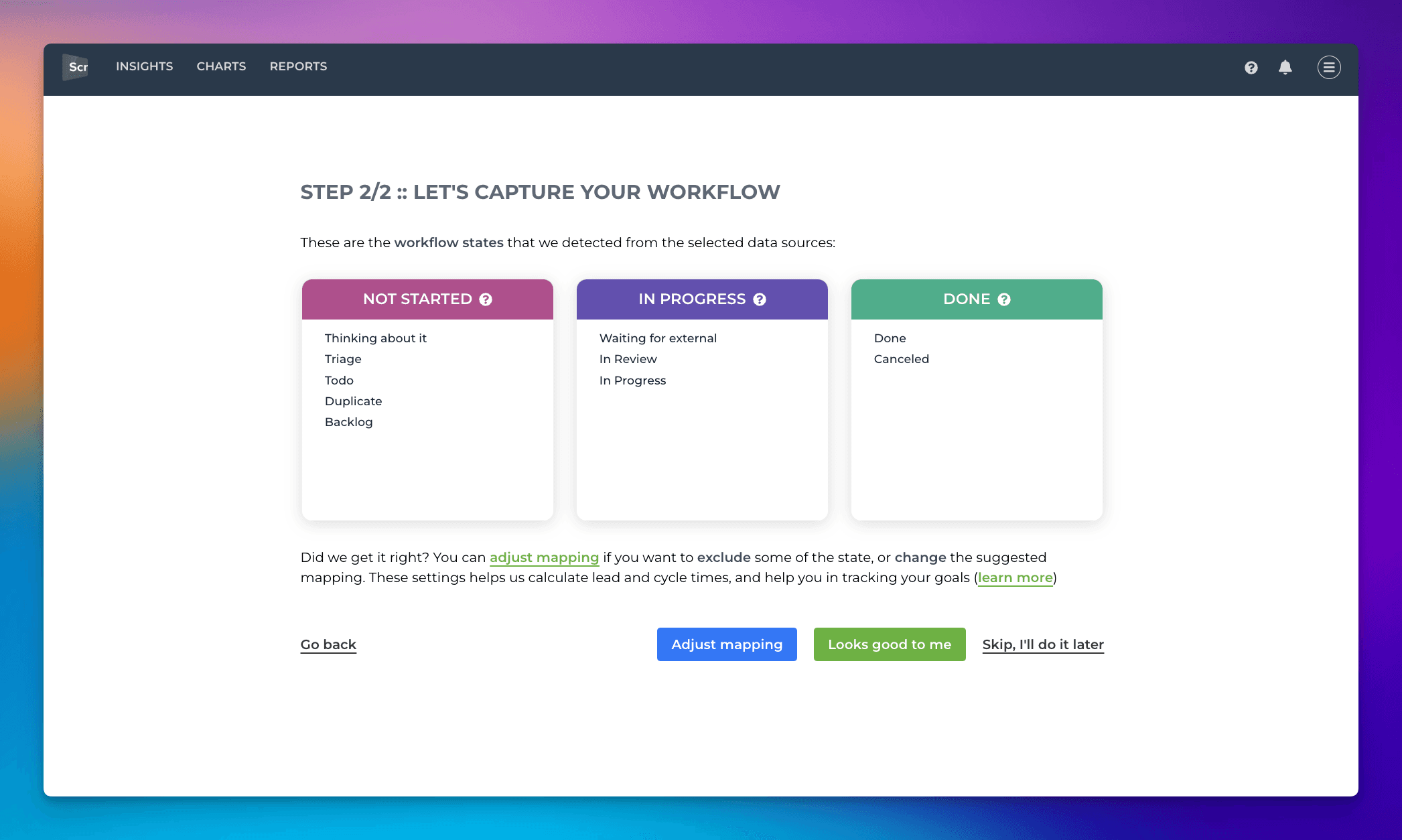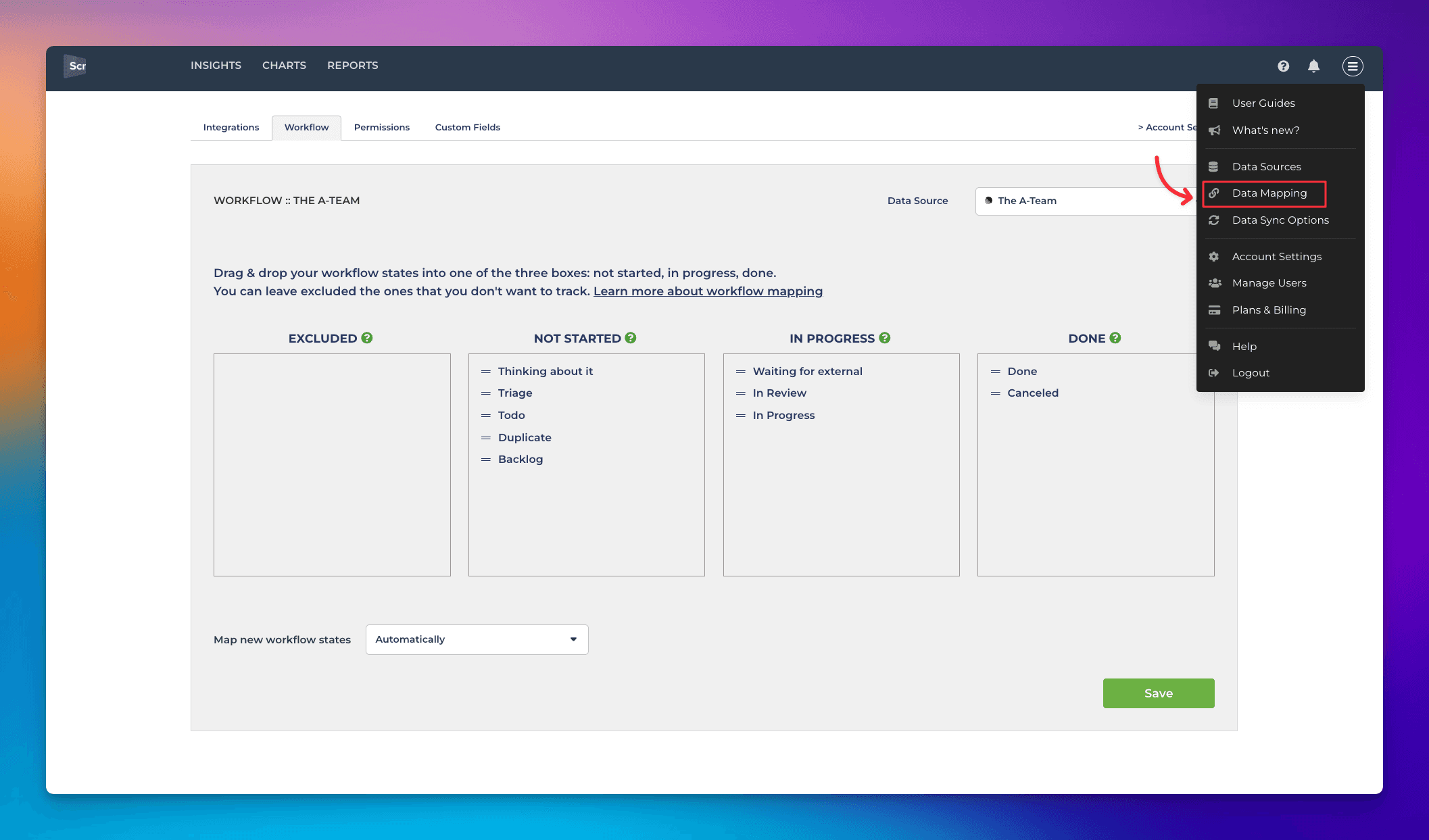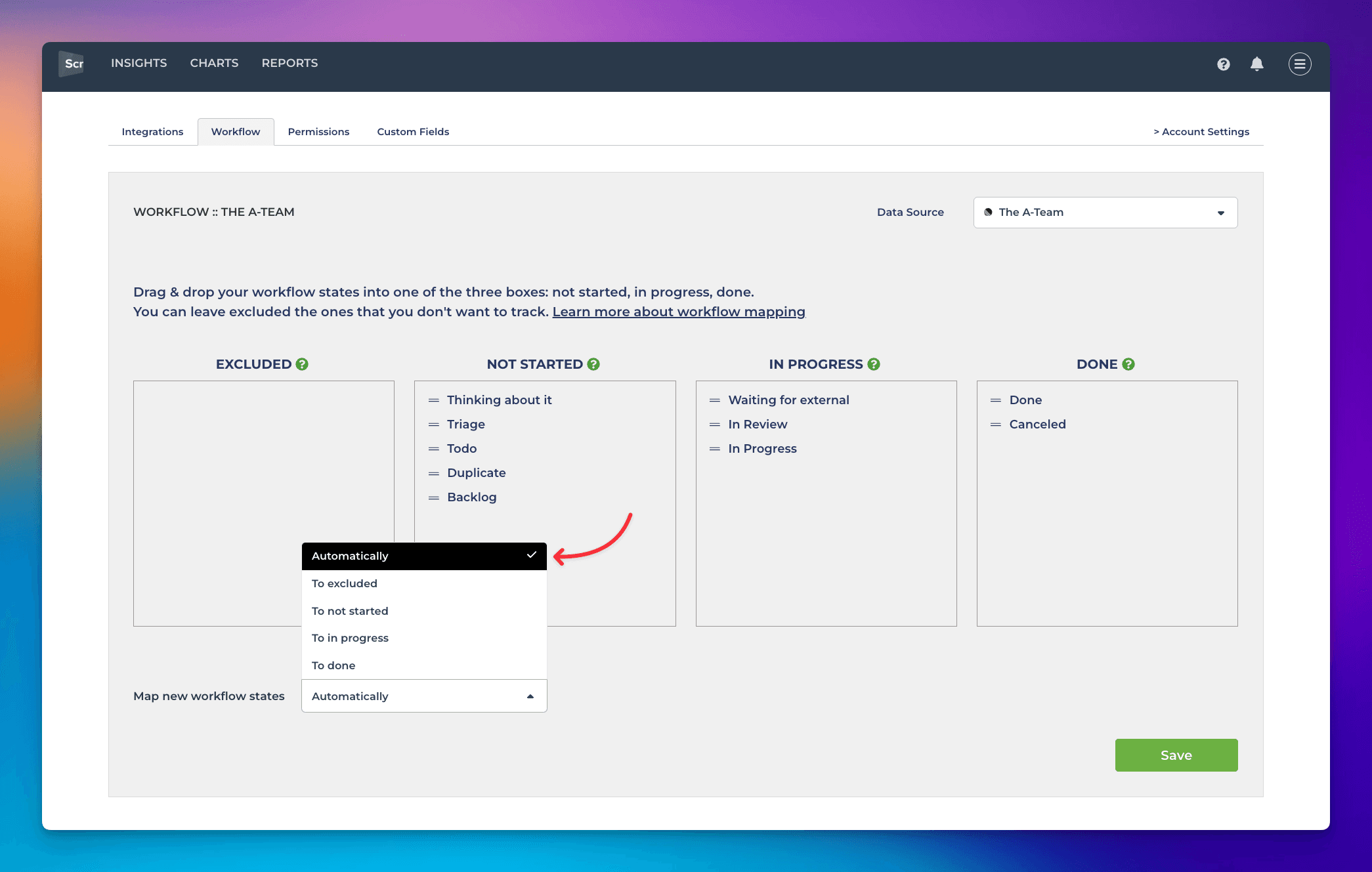Guide contents:
Map your GitHub worklow
When importing a GitHub Project as a data source, your board columns are automatically mapped to either Not started, In progress, or Done. This information is used when calculating the Timing metrics.

If the suggested mapping looks correct, you can accept it by clicking Looks good to me. To make changes, click Adjust mapping. The boxes become editable, and you can drag & drop items between them.
Not started = Work to be done
In progress = Work started but not completed
Done = Completed work
When importing repositories (instead of Projects), the timing metrics are calculated as below:
Lead time starts when an issue is created
Cycle time starts when the issue is assigned to a person, or when pull request is opened
Lead & cycle time is stopped when the issue is closed, or the pull request merged
Accessing the workflow settings
You can access the workflow settings by selecting Data Mapping from the main menu.

When using GitHub projects, you may add new columns to your board. By default, new workflow states are automatically mapped to either Not started, In progress, or Done. Alternatively, you can force the mapping of new states by selecting one of the other options from the menu.
